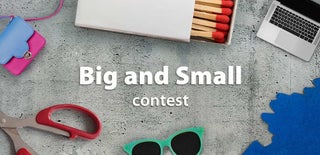Introduction: Chocolate USB Keyring
With this insctructable, I will show you how to revamp a USB key to a more appetizing tiny chocolate tablet key ring on a budget.
Notes :
- As English is not my mother language, I did my best to be clear and fluent, but some expressions may sound weird. Don't hesitate to point them to me, I'll correct as fast as I can.
- In this inscructable, dimensions are given in the metric system, you can use this site to convert if needed.
Supplies
To build this key ring, you'll need the following materials :
- A USB key. The easy to dismantle kind is better than the other kinds as you will need to get its guts without damaging it.
- An old key ring (for example, a brand goodie you don't want to keep).
- Some air hardening modeling clay (I used Giotto Plastiroc, but any other kind should be good). My advice is to avoid oven hardening clays as, even if the USB circuit may resist, I don't think it's a good idea to put it inside an oven.
- Transparent tape
- A little piece of aluminum foil
- PVA glue (basic wood glue).
- Acrylic paint and varnish.
For the tools needed, nothing very exotic :
- Ruler and cutter
- A roll and some thick cardboard.
- Sculpting tool (but a tooth pick should do the job).
- A nail file and a triangular small file
- A small paint brush
- Some clamps
- Small drill
- Laminator (optional)
Step 1: Dismantle USB Key
With the king of USB key I chose, dismantling is quite simple :
- Remove the metal part by bending it.
- The two plastic parts that protect the circuit can be separated easily using a screwdriver.
Step 2: Sculpt the Two Plates
For both plates (top and bottom), follow these steps :
- Build a gauge by taping together two parts of thick cardboard (I used commercial calendars that are 1.5mm thick). The two parts are taped parallel and separated by a gap of 20mm which corresponds to the width of USB circuit plus a margin on each side..
- Use the roll to flatten a ball of putty while it's still thicker than the cardboard gauge. Each plate must be 50mm x 20 mm
For the bottom plate, push strongly the USB circuit on the plate while still soft to imprint the components in the clay.
For the top plate, after having removed the gauge,
- draw marks on each side of the clay on the support every 5 mm. It will allow to "sculpt" regular chocolat squares on the tablet.
- Use a plastic ruller to "sculpt" the squares by pressing its edge on the putty after having aligned it on the marks on the side.
Let dry at least a night. Putty may fold if you try to unglue it from the support too soon.
When it's dry, use a cutter blade to remove the plates from the support and, on the top plate, remove 2 center squares from one of the ends. It will allow the larger metal part of the USB plug to fit.
Step 3: Gluing and Filling the Gaps
Glue the two plates to the USB circuit using PVA glue and let dry. Once dry, this kind of glue becomes a sort of plastic that don't conduct electricity, so the USB storage will continue to work without problem.
When the glue is dry, fill the gaps between the two plates with little rolls of clay that you force between. Don't hesitate to put more than needed, the overflow will be filled after.
Step 4: Filing
Once the putty has dried, use a nail file to clean the surfaces. Use the rough side of the file first and the fine side to finish.
For proper chocolate squares separations, use a triangle shaped file.
Step 5: Packing / Lid
Tablet packing will be used as a lid to protect the plug from dust.
You can download the provided SVG (vector image) to print it or draw your own design. You basically need a 3D rectangle with one missing face. Dimensions are :
- Length : 45 mm
- Width : 20 mm
- thickness : 6 mm
Cut the packing using scissors or cutter, except the parts where the missing side should be. Rip this side for a more realistic look : who ever use scissors to open a chocolate wafer ?
Don't forget to let some margins to ease gluing.
Either you have a laminator or you can use transparent tape to solidify and protect the packing.
Bend the packing over the wafer and use transparent tape to glue it tight around the wafer. If it's too loose, you will lose it very quickly.
Attachments
Step 6: Paint
Paint your wafer. I suggest a chocolate color, but everybody is free, after all.
Let dry, then varnish.
Step 7: Aluminum Foil
For the same reason that you ripped the packing, the foil will not be cut in a straight line.
Use a sculpting tool or a plastic ruler to shape the foil on the wafer, then glue (with PVA) the foil on the top of the wafer.
Use a small paintbrush to spread out the glue on the aluminum and finish gluing it.
Cut the overlapping foil to "free" the USB plug.
Step 8: Attach to Ring
Dig a hole in one of wafer corner using a small drill.
Reshape the attachment ring if needed from round to triangle and plug each end inside one opening of the hole.
You're done.
You now have a unique USB key for chocolate lovers !

Participated in the
Big and Small Contest














